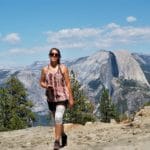Rather active and involved in social groups between experienced (or aspiring!) alternative travelers, we came across the story of Margaux, a french woman hitchhiking solo across North and Central America for months – before the Covid-19 pandemic put an end to her journey. We found her story so captivating and her advice so pertinent that we asked her if she would be willing to share her experience here… Guess what? Well, you will find it out soon in this post!
Can you introduce yourself?
Hello everyone! My name is Margaux, and I’m 29 years old. I am an ergotherapist and also passionate about a unique species: the Human Being! I have always been fascinated and amazed by travels and the awareness they have brought to me.

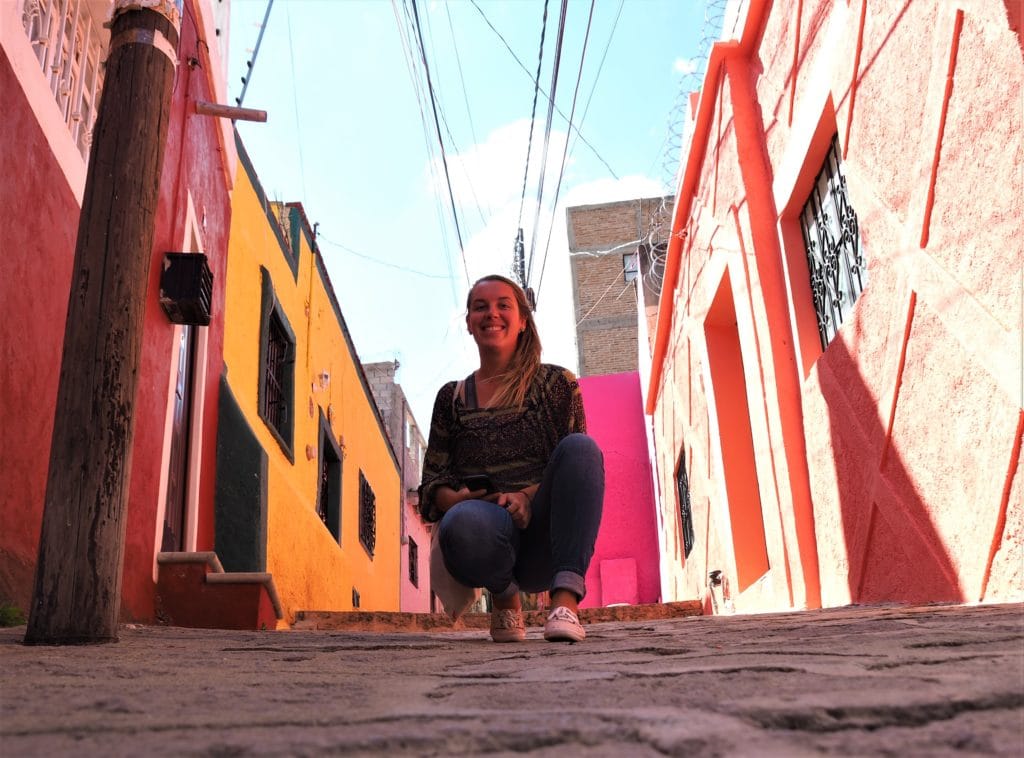
What made you decide to hitchhike solo?
I lived in Canada for several years, and that made me realize how much of my actions and thinking were of cultural origin. But it was really when I was in Bolivia to do a two-month volunteer job as an ergotherapist that I realized that this was the kind of travel that really suits me, a slow trip that made me experience the “real” daily life and meet the locals. Living for two months in Sucre, Bolivia, I felt as if I was part of this city, taking on local habits: going to lunch at the market, shopping and chatting with the beautiful ladies with long braids, spending hours watching people pass by in the central square where friends, pupils, lovers and families come to gather. This is where my long and slow travel project was born!
How did you get to hitchhiking?
Hitchhiking was a mode of travel that was very close to my heart, because it totally corresponds to my values, my needs and my travel wish. Going to meet locals, living authentic experiences, moving slowly overland and seeing all the changes with my own eyes, but also using a resource that was already moving and that limit my carbon footprint. These are the main reasons that made me want to hitchhike! And I must say that traveling thanks to people’s generosity and humanity is what pleases me the most! At a time when everybody is suspicious of everything and everyone, I also wanted to prove to myself (and to whoever who wanted to hear me) that humanity still exists, and that there are many more good people than bad ones on this planet.
Were you apprehensive at first? Were your family and friends worried about you, doing hitchhiking solo?
It took me a real mental preparation before hitchhiking, solo. I am often asked, “Aren’t you scared?”. Before hitchhiking solo for the first time, I was obviously scared to death! I read a lot of testimonials on Internet, blog posts, books, and exchanged with friends and travelers who were traveling this way. Until I felt ready. To make sure that this way of traveling really suits me, I even took a three-week “test trip”, hitchhiking solo, in the coastal provinces of Eastern Canada. During this trip, I made some tests and errors that made me adjust and develop new habits, strategies – in short, finding a way to make it work.
As for my relatives, they didn’t try to dissuade me, because I didn’t ask their opinion either – actually it wouldn’t have changed my decision anyway! Of course, they were worried about me, but being “well prepared” reassured them and I made a point to give them news very often. I didn’t want my way of traveling to be a stress for them on a daily basis, so reassuring them regularly was a responsibility that I considered indispensable. As my trip went on, I realized that I was hearing from them less often, sometimes for several days. At that point, I told to myself: “That’s it, they’ve gotten now used to it!”
Can you describe your solo hitchhiking journey?
I started my journey in Montreal, Canada, and quickly made my way to the United States via Detroit, Michigan. Then I went to Chicago for a few days, from where I started a long crossing to Wyoming: it took me three full days of hitchhiking. I spent several weeks in Wyoming and Montana National Parks before returning to Canada in the Rocky Mountain Range. I reached the Canadian coast and then, I never left the west coast until Baja California, the westernmost state of Mexico. I spent just less than 4 months in Canada and the USA, mostly with my tent in the wilderness and national parks before arriving in Mexico where I spent 6 months. I crossed Mexico from west to east, ending in the Yucatan Peninsula from where I was able to reach Belize. My trip was initially planned to reach Patagonia but I chose to stop it prematurely because of the Covid-19 – only to return to France, 10 months after my departure.
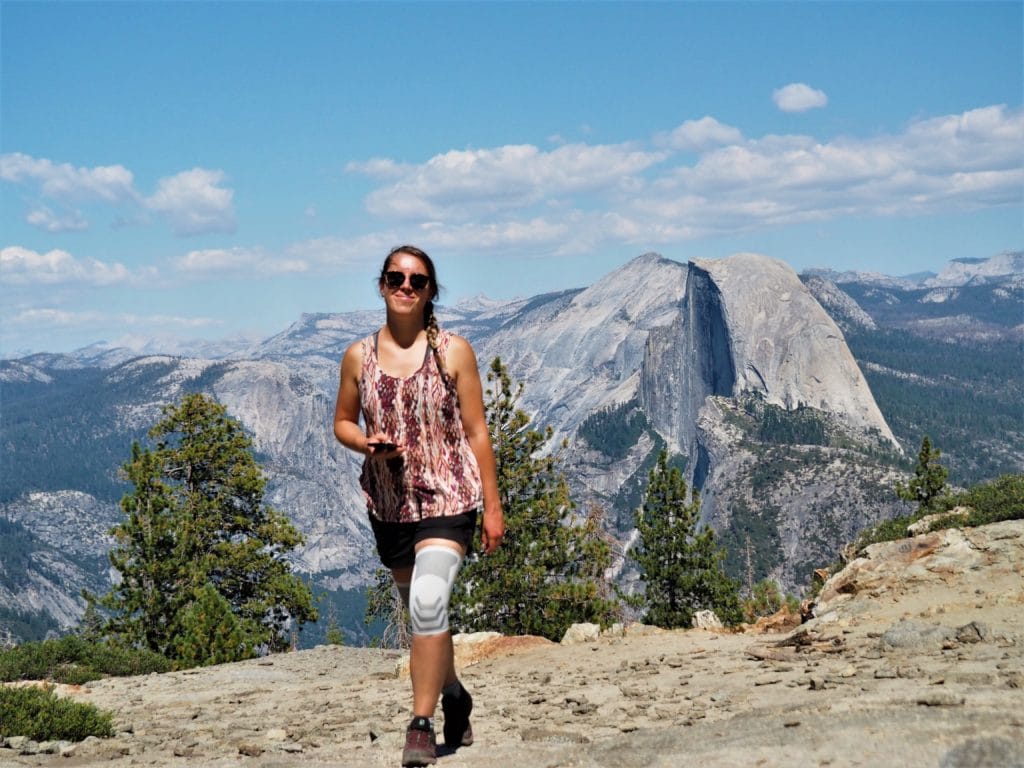
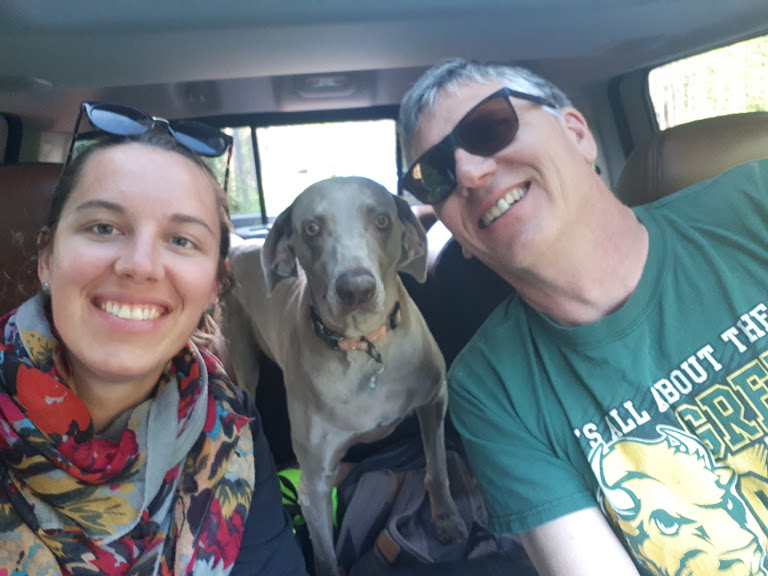
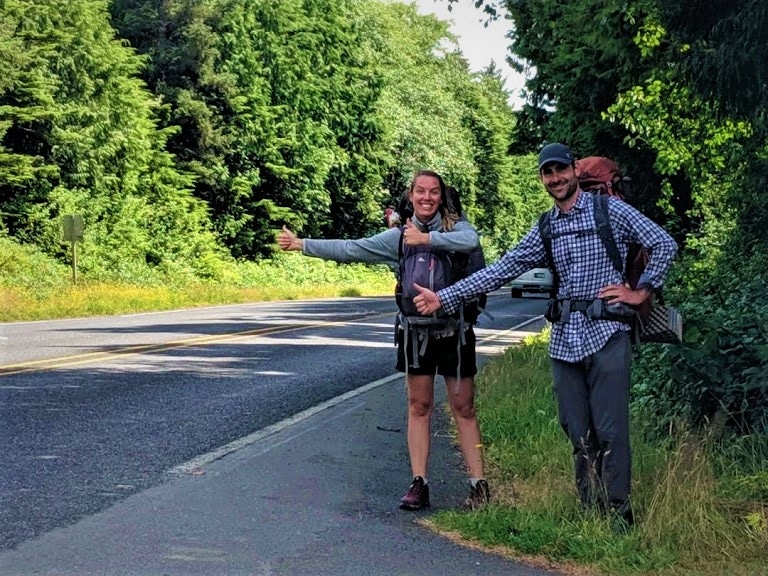
What are your best memories? And your worst ones?
Among my worst memories (and there are not many!) and which I laugh a lot when I think about it today, there’s this hellish hitchhiking day between Detroit and Chicago that took me 12 hours instead of… 4 hours. This day was the worst of all, but it taught me that sometimes between two big cities geographically close, it’s not worth hitchhiking. The second worst memory is a night of wild camping in a municipal park in Kamloops (Canada) where I imagined myself surrounded by people wanting to kill me, while I was only caught by the park’s automatic sprinkler system! I had a good laugh at 2:00AM, after taking both my courage and my bear-spray to get out of my tent! That night, I finally took a little shower to celebrate this scare!
The best memories are so many that it’s super hard to choose just a few. I was given a lift by a retired couple in Montana, who showed me their hunter son’s house looking like a real natural history museum. A gentleman made a 3 hour detour to take me to Vancouver (after my famous night in Kamloops!), and I arrived in San Francisco in a car that two young people had bought for $300 without back seats, where I was stuck between my bag, a bunch of bananas and the kitten they had just adopted. I met a lot of people with whom I had life-changing conversations, who shared stories with me, who invited me to eat at their home, who offered me things, who took detours of several hours to get me to my destination. There are dozens of best memories!
What would you change, if you had to do it all over again?
I don’t think I would change anything, except maybe I would take even more time and not set myself any deadlines. I was supposed to meet my sister in California on a given date, it was great, I don’t regret it at all, but it forced me to go faster than I would have spontaneously gone to discover Canada and the USA. I also gave away my camping gear before I came to Mexico, and I often regretted it. Couchsurfing works great in Mexico, but in some of the more natural areas I often like being alone, in the heart of beautiful nature. Having a tent gives me more flexibility and less prior organization for accommodation. Hitchhiking means spending a lot of time with people, and I would have appreciated being alone in my little cocoon (my tent!) a little more often.
Tell us about being a woman hitchhiking solo: did you have any difficulties? Is it badly perceived by locals?
I can only talk about what I know. I’m a girl, white, and traveling alone. In my opinion, those are three characteristics that make it easier to get a ride. On the other hand, I’ve had to travel several times with people I’ve met along the way. I traveled for three weeks with a guy in the United States, and despite my apprehensions, it worked great! Several times, I hitchhiked with other people over short distances (less than 2 hours), with 2 and up to 7 other people! Well, on the other hand, hitchhiking with 8 people is not recommended. But not impossible! The image you send back and smiling all the time are really two determining elements according to me.
A lot of people who gave me a ride told me that it was the first time they had done it, but when they saw me, they had a good feeling about it. There are also a lot of people who stop (or turn around!) because they were afraid for me, and felt like they are saving me from a dangerous situation because “no one will give you a ride”. I’ve been through it tons of times, many people think that solo hitchhiking is extremely dangerous (especially as a woman), that “people aren’t nice” or “people don’t stop to pick up hitchhikers” – which is, in my experience and in the countries or regions I’ve travelled to, totally wrong! All along the way, from the beginning to the end, I heard: “here in this country/state, we’re nice, you’re safe, but in the neighbouring country/state, don’t hitchhike!” Systematically. People are afraid of what they don’t know.
In Mexico and Belize, I felt safe as being white – because people were curious about what I could do here, in the middle of nowhere. I don’t know if it was really my skin color or just being identified as a tourist that had this effect. Maybe a little bit of both.
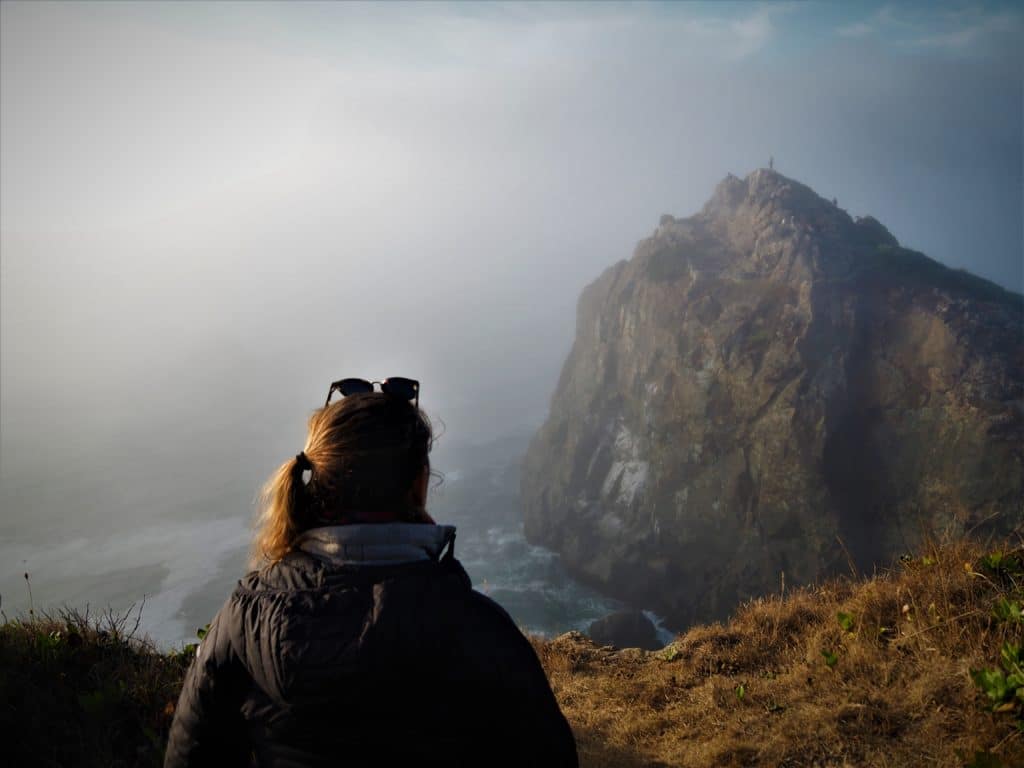
What are you advising for a woman who wants to hitchhike solo?
In my opinion, advice given to women are pretty much the same as for guys who want to hitchhike solo. The most important thing is to feel good, to always keep your head up and above all, to be prepared for different situations and to know how to adapt to them. These are the great practical tips I could give to those who would like to hitchhike:
Smile
… and have a POSITIVE ATTITUDE, ALL THE TIME (even when you are tired, you didn’t sleep well, or when the weather is so bad). This is THE key to success in hitchhiking! And even if it’s sometimes difficult to keep this state of mind, this is es-sen-tial to hitchhike successfully. Who want to give a ride to someone who’s sulking in his/her car? Plus, you’ll see that even if the wait is long, time passes much faster by singing on the road side and marveling at every butterfly, rather than insulting every car that passes by without braking. I’m convinced: you’re giving off good vibes, and if they’re negative, you’re not going to stop.
Choose a good spot
Be visible from afar, avoid dangerous places (hilltops, curves, isolated places), stand in a spot where your driver can stop his/her car safely, and where he can guess roughly in which direction you are going. Stand at the exit of a city even if you have to take a local transport or walk a lot to get there, you will save time (it can take 2 hours to get out of a very big city). Avoid junctions where several ways are possible, on major highways go to gas stations, rest areas and ramps where there is only one possible direction and where cars are slowing down and drivers have time to see you and stop (especially since it’s forbidden to hitchhike directly on the highway – well, sometimes you have no choice but avoid it at all costs!) Avoid places where there is a lot of traffic (people are focused on the traffic) but still prefer spots where there is traffic and possible for somebody to see you.
Make an effort to impress
Avoid hiding your face or eyes behind glasses or hat if possible, and try to create an eye-contact with every driver (combined with a big smile, of course!). In the same spirit, have both hands visible (no hands in pockets or hidden in the back), if you wear a bag in front like me, put it down so you don’t have anything in front of you. In short, don’t look like you’re hiding anything! Keep your arm straight and thumb up, show a big smile (it’s silly but a soft arm gives an image of a nonchalant or neglected person, so make sure you’re muscular). Look clean, wear appropriate clothing (comfortable, visible, that protects you from the sun or the cold). I have also noticed that people stop more easily when I wear colorful clothes. So don’t hesitate to take out your favorite flowers-print T-shirt, or a colorful scarf that will make you look friendly! Also, as a woman, I have always been careful that my appearance is sober and can in no way be misinterpreted: no cleavage showing top, no tight-fitting clothes or too revealing fabrics.
Anticipate, plan
Of course, there is no question to make big plans without being sure they could be achieved. Before hitchhiking, choose your destination, study your itinerary closely (how long does it take?) and make sure that you have a good idea of where you want to go. Are there a lot of changes in direction? Is it a busy or isolated route)? Plan to leave enough in advance to make sure you don’t end up in the middle of nowhere or arrive in the middle of the night (you can add a few “safe hours” to Google map estimation or even double the estimated travel time in some areas to help you set a departure time). For example, I’ve done 9-hours trips in a day because I was just traveling on the highway, and once a 4-hours trip turned into 12 hours. Spot a location on the map where you could stop if you are unable to reach your destination, and especially MONITOR THE GPS TRACKING during the trip to know where you are going, don’t miss your destination, and make sure you are going to the right place. You are responsible for this, not your driver, who should not be confused with a taxi driver. Another great way to plan your trip is to check on Hitchwiki database – a website dedicated to hitchhikers where you can learn a lot of tips (can I hitchhike in this country? Is it legal? What is the sign for hitchhiking in this country? Is it easy? etc).
The sign
I tried both techniques (with and without sign), and nowadays I travel exclusively without a sign, for several reasons. This way, when a driver stops, I first ask where he is going without giving him my destination. That leaves me a few seconds to evaluate if I feel confident or not with this person, and eventually find a good excuse to refuse – but also to know where he’s going, and not to have any bad surprises (I could then check on my map that he’s taking the right route).
Follow your instincts, without any doubt
You’ll soon realize that we have a 6th sense. Decision making is very quick, whether it concerns a driver who chooses to stop when he has seen you, or you as you accept or refuse to get in. If it’s not advisable to spend too long on the road side, take a few seconds – before opening the door – to quickly report the situation. Before getting into a car, make sure you know where you’re going and that you feel comfortable with the person. If you don’t feel comfortable, don’t get in! It’s time to come up with a good excuse (you are allowed to lie in this case): “I’m not going in that direction”, “I’d like to go further”, “I’m waiting for a friend/my boyfriend who is going to join me soon/has gone to the bathroom…”). If you are in a car and you want to end the trip because you are feeling not comfortable, don’t hesitate to say something else: “I took the wrong route, can you drop me off there”, “I don’t feel well”, “I’m going to vomit”, etc. I can reassure you, I have never had to get out of a car and only twice I have had to refuse a ride because I did not feel like getting into these cars.
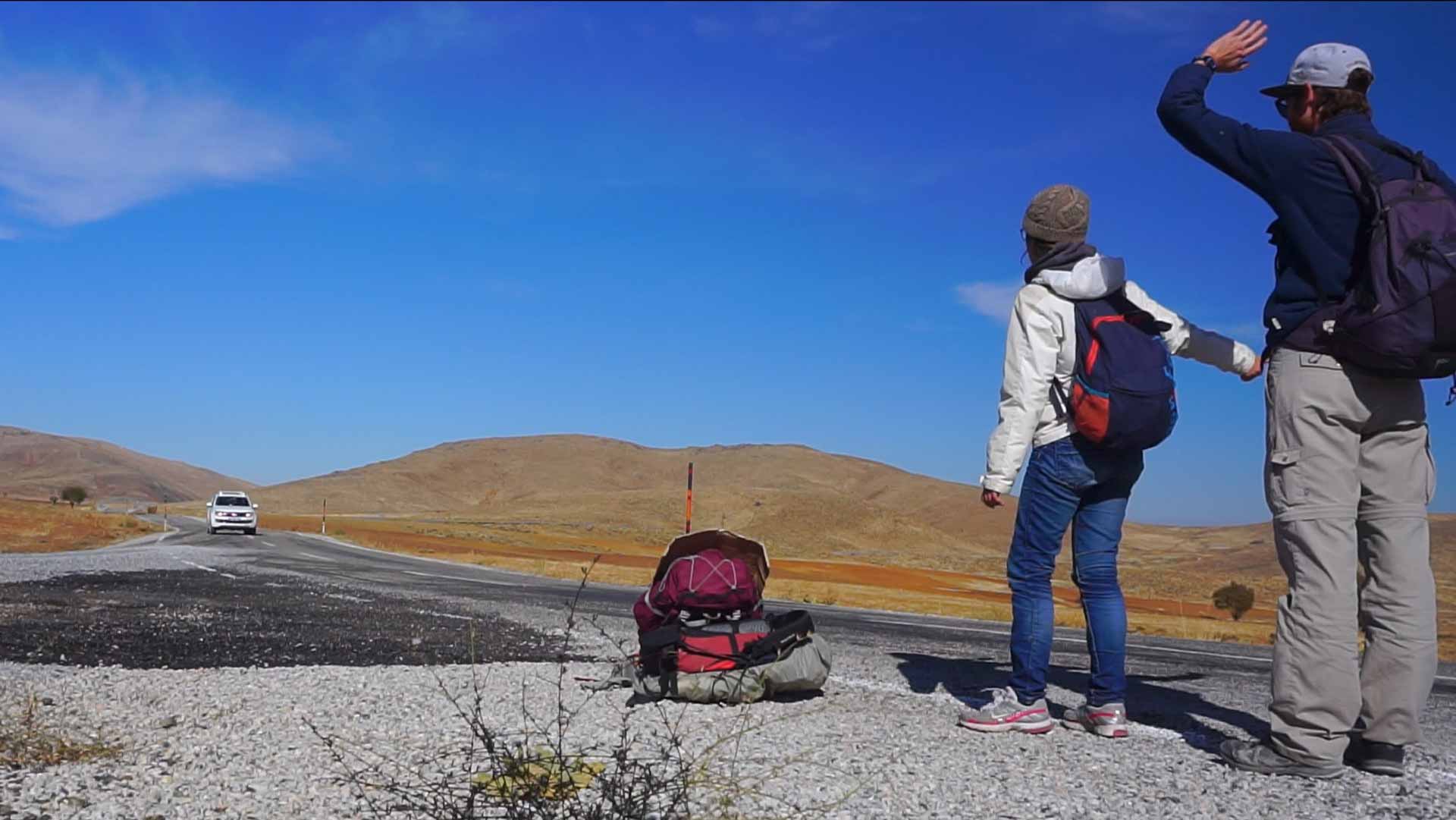
More about our tips to easily get a ride in our
hitchhiking guide
The driver who makes us uncomfortable
If you really feel that the situation is ripping off, look for a way to get out as soon as possible. Otherwise, attitude and communication are two excellent ways to deal with a situation where someone makes you uncomfortable. ALWAYS be positive and confident, even if you’re not! An unintended person should not feel that you are afraid, but that you are in control of the situation. “Leverage questions” that a driver who is trying to intimidate you may ask (interesting to say that these questions are almost always asked by everyone, so you already know how to answer them): “aren’t you afraid to hitchhike / by yourself / being a girl?”, “haven’t you ever had a bad experience?” etc. Answering in an ultra positive way, like “no, I’m not afraid at all, people are great, incredibly generous, great experiences are incredible, I’ve never had a bad experience! “(which is usually totally true) will already deter a malicious person from behaving inappropriately for the simple reason that no one wants to be different, or be the first malicious person (psychology studies have proven this). In short, I repeat, be confident, assertive and positive is essential! Another strategy that works very well is to ask the person about their family (Are you married? Do you have children? What does your wife do for a living?), to talk about your own family (my parents do this, I have a sister, etc.), or even to make links between your family and your driver’s family (my father too, like yours, he does that, etc.). This type of discussion really touches the emotional side and can allow a malicious person to reconsider his possible bad intentions. The great thing is that these questions are usually the first ones your driver will ask you, and how you answer them (positively, confidently and enthusiastically) will often determine the dynamics of the ride ahead. Of all the people I’ve hitchhiked with over the past few years, I’ve only once been really uncomfortable with a driver, and it was these strategies that helped regulate the situation. One last tip: use HUMOR! Answering an “embarrassing” question with a laugh is sometimes the best answer to give, which can make an inquisitive driver regret the question or feel ridiculous. What is important is to always be in control (or make it seem like it) and to have a fair (not unbalanced) relationship between driver and hitchhiker, i.e., never to be in a position of inferiority where our driver could feel like he or she is pushing the wings. Once again, I reassure you: these situations are extremely rare, but “one knowledgeable woman is worth ten”. Knowing what to do in the event of problems allow you to react adequately if it happens to you, but also to travel solo by hitchhiking with a complete mind peace – because in 99.9999% of cases, it’s only HAPPINESS!
… on her Instagram account
@Marge_lette
* Photos credits: Marge_lette *
